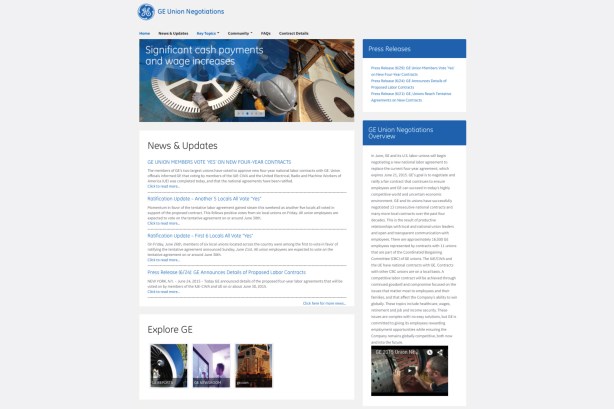Marketers, the breadth of your job is expanding. Yes, taking on more is a feeling you know too well as recent trends have challenged you to use and align content creation, social media, media relations, SEM and myriad other tactics designed to engage prospects.
So what’s different about the future of marketing as we know it now? This expansion of duties doesn’t involve a new tactic, it’s a new client: your colleagues. The Future of Marketing isn't a new tactic. It's a new client: your colleagues Click To Tweet
No longer is marketing just for driving brand awareness and conversions; it’s an organization-wide service provider filling a variety of roles. If you haven’t already, you will soon face the challenge or feel the pull of using your marketing skills and tools to assist colleagues solving department-specific challenges.
Think of yourself as a type of IT. Just as IT lends its expertise to support an entire organization, so too must marketing. Businesses are finding that marketing’s skills and customer-centric approach improve the performance of other departments, such as human resources, product development and public relations.
Here are a few examples:
Building Morale
Maintaining motivation and creativity is a challenge for every human resources department. Adidas used a content marketing approach to meet that challenge through the creation of GamePlan A. The blog takes a new twist to employee motivation. Its motto: “We are creators, tackling work life with an athlete’s heart.”

GamePlan A is a new twist for employee engagement and motivation, created by Adidas. The future of marketing is spread across the entire organization.
It features posts such as “How Robbie Rogers’ Courage Can Inspire Us All” and “6 Strokes to Reach Your Goals-Marco Koch.” Other posts concentrate on career development: “Sweatworking over Networking” and “A Marketing Mind in a Digital World.”
GamePlan A celebrates the discipline, determination and aspiration common to high-performing athletes and applies it to the creativity and discipline needed by Adidas employees. Like most emotional appeals, it has a short shelf life. So, Adidas posts frequently.
Recruiting Talent
Can businesses lure and identify the best talent to their organization through marketing? Sure.
General Electric did so through the creation of a Tumblr called Spring Break It. It opened its testing lab to a film crew and blasted, crushed, and smashed 40 everyday objects. The blog is fun, sometimes funny, but it took a step further in an attempt to engage the interests of its ideal employees.
While the destruction has curb appeal, GE’s other videos grabbed engineers’ educational curiosity by showing how its high-impact products endure the tests. The videos, which the company also posted on YouTube, drew clicks and earned shares from engineers that showcased GE’s novel technologies and made it a more appealing place to work.
Interested in giving it a try? Here are a few high-level steps:
- Use HR to identify ideal candidates, their interests and the channels/networks they use
- Encourage existing employees, your experts and influencers for prospective employees, to provide content ideas
- Enlist your marketing expertise to assist with the content creation and dissemination
Communicating Internally
To solve a touchy internal communications challenge, GE relied on brand journalism. In the midst of employee contract negations, GE discovered its workers picked up most of their information from union-controlled social channels. Naturally, the union slanted the content in its favor.
GE responded with an app and website for employees to use during the negotiation. It covered the issues and allowed the company to address any misinformation that appeared on other sites.

GE’s Internal Union Negotiation Website
The editor of GE’s site interviewed employees to discuss their concerns and made daily updates. Through the negotiations, the site drew 65,000 hits with half the users coming back a second time. Employees eventually approved the contract, and the effort was named PRWeek’s Internal Communications Campaign of 2016.
Remember, getting an initiative like this to work requires a transparency executives may feel uncomfortable providing. As marketers, it’s our job to preserve brand authenticity and build trust, and that is especially true when working with the employees in our own organization.
Listening Intently
They may seem like good old days, but before social media, companies primarily dealt with complaints on a private, one-to-one basis. Now, your customers happily post about every delay, defect and disappointment to their entire network, sometimes a group in the tens or hundreds of thousands. Occasionally, they even post about something they like…
Because of this reality, marketing’s social media managers have real-time access to some of a brand’s most valuable information—the unfiltered opinions of customers. Marketers must learn to hug their haters, as Jay Baer notes. These frustrated customers identify how brands can improve its products, services, and even image, making the data and anecdotes important for product development and quality assurance teams.
Of course, happy customers are great, too! Identifying them will create opportunities for them to become beta users and brand ambassadors. This not only serves the goals of product development, it supports the missions of marketing and public relations. Getting VIP treatment will likely inspire these already-happy users to organically laud your brand, giving it credibility that few marketing campaigns can generate.
Through social listening, customer service also benefits. Not only do people use social to complain about bad brand experiences, they expect quick resolutions. New research from The Social Habit found that 42% of customers who complain online expect a response within 60 minutes.
Your brand needs to react quickly to their feedback or the issue could fester and cause even more damage. Ideally, your social team will act as an extension of customer service. Since people expect such quick responses, your social team doesn’t have time to funnel feedback to the customer service department. Your social team is the customer service department in this scenario.
Remember, your competitors, who can copy your products and services, can’t take away a strong bond between you and your customers. Establishing these invaluable relationships with customers starts at home.
Marketers should meet regularly with customer service and share experiences. Identify responses and techniques that have worked well with dissatisfied customers. Exchange information about super users who might act as brand ambassadors. Then, share that information with other departments that might benefit from understanding customer complaints, such as sales and product development.
Content Intelligence: The Next Step
More departments will dip into marketing for counsel as marketing begins using more sophisticated tools. As content intelligence software becomes more widespread, for example, forward-thinking departments outside of marketing will wring out its data and insights to improve efficiencies. More departments will dip into marketing for counsel as marketing uses more sophisticated tools. Click To Tweet
Through its ability to identify trends being whispered about, content intelligence solutions could identify the most profitable direction for the next iteration of a product. The software’s data also has the potential to allow brands to identify a groundswell prior to a peak ordering period, ensuring that human resources can staff appropriately and production can meet the increased demand. The opportunities are boundless.
Marketing teams across numerous industries have proven themselves effective influencers to external audiences, but the days of marketing in a silo are numbered. This new future should be exciting news for ambitious creative marketers.
Turn inward and bring your craft and tools with you. Identify ways you can help other departments. Along with these other department managers, you will create a new atmosphere in the company, one where everyone is a customer and where everyone can offer insights into making the company better. Sooner rather than later, customers and employees will feel part of the solution.


